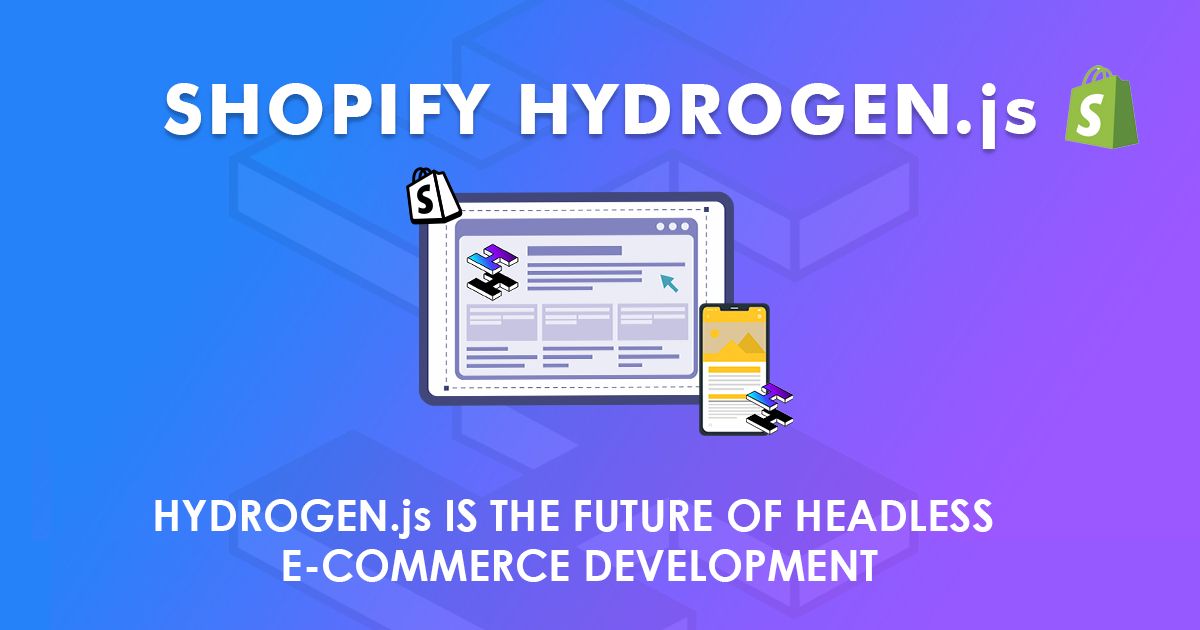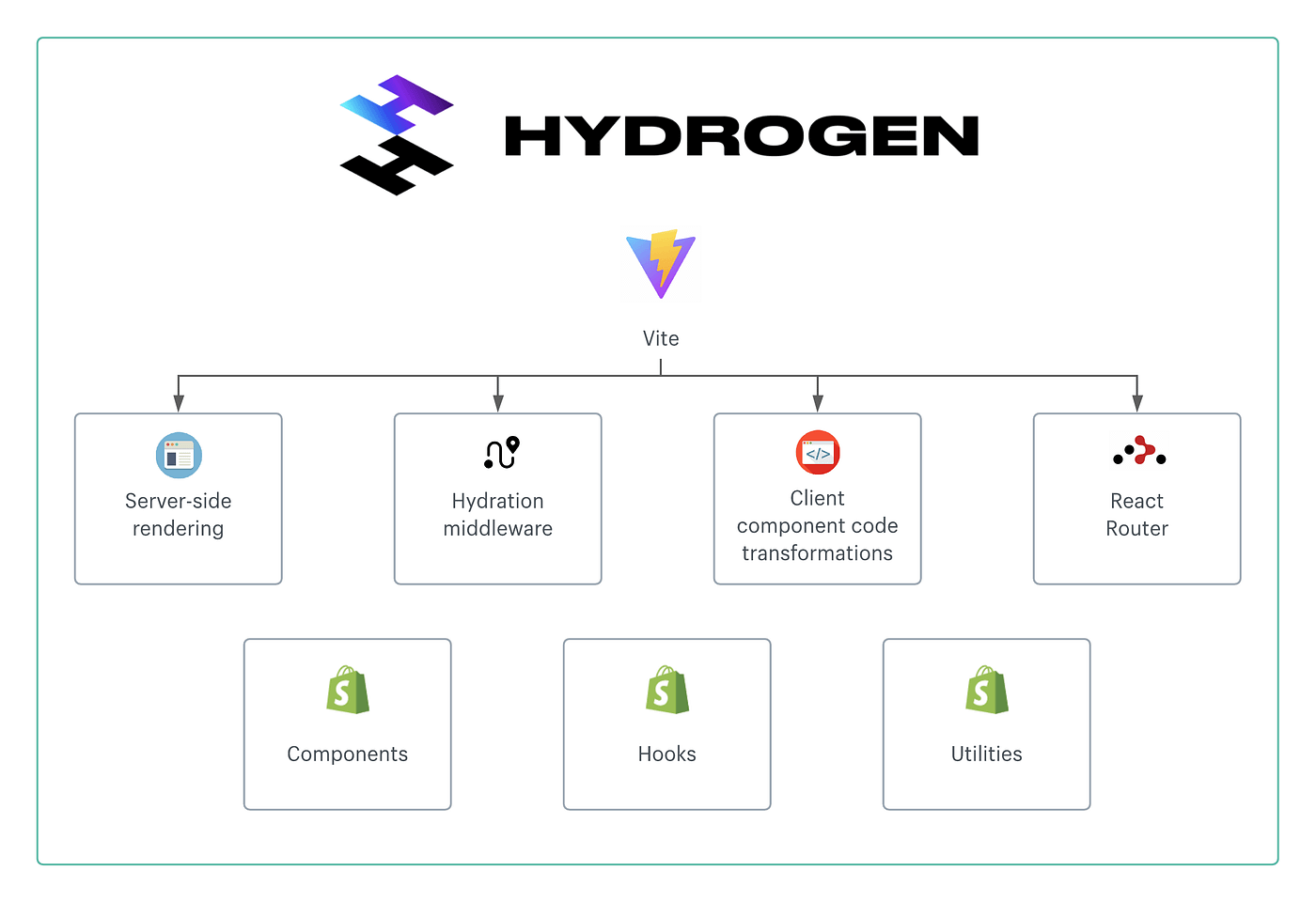Why Shopify Hydrogen.js is the Future of Headless E-commerce Development

E-commerce is evolving faster than ever. Customers demand lighting-fast experiences, personalized content, and seamless journeys across devices. But traditional monolithic platforms like Shopify’s default setup (or even WordPress + WooCommerce) often struggle to keep up. That’s where headless commerce comes in—and Hydrogen.js is leading the charge.
In this post, I’ll break down why Hydrogen.js isn’t just another framework—it’s a game-changer for businesses that want to stay ahead. I’ll share real-world examples from our own case studies (think 40% faster page loads and 25% higher conversions) and show you why developers and brands are ditching clunky setups for this modern approach.
What is Shopify Hydrogen.js? (And Why Should You Care?)
Hydrogen.js is a React-based framework built specifically for headless Shopify stores. Think of it as the glue that connects your Shopify backend to a custom frontend tailored to your brand. Unlike traditional Shopify themes, Hydrogen gives you full control over the user experience while leveraging Shopify’s powerhouse infrastructure for checkout, inventory, and payments.
Here’s why it’s different:
- Built for speed: Server components and streaming let you load pages as the data comes in, eliminating clunky spinner screens.
- SEO-first: Automatic sitemaps, server-side rendering (SSR), and dynamic meta tags make Google fall in love with your site.
- Developer-friendly: React + Shopify’s ecosystem = less time wrestling with code, more time building unique features.

Key Features of Hydrogen.js (That Your Developers Will Love)
Hydrogen.js isn’t just hyped—it’s packed with tools that make developers’ lives easier and your store perform better:
React-Based + Shopify Native
Built on React (the most popular frontend library), Hydrogen lets developers reuse components and integrate modern tools like Tailwind CSS. But unlike generic React setups, it’s designed for Shopify—so features like cart management or product fetching work out of the box.
Blazing-Fast Server Components
Pages load in chunks (like Netflix), so customers see critical content first. No more staring at loading spinners.
Pre-Built Shopify Tools
Hydrogen includes ready-to-use hooks and components for:
- Cart management (<CartProvider>)
- Product variants (<ProductDetails>)
- SEO tags (<Seo>)
No more starting from scratch.
Real-Time Data with Storefront API
Pull live inventory, pricing, and customer-specific content (like loyalty points) without breaking a sweat.
Dev-Friendly CLI
The Hydrogen CLI scaffolds projects, connects to your Shopify store, and even simulates latency for testing.
👉 Want to geek out? Here’s the official Hydrogen.js documentation for deeper dives.
Hydrogen.js vs. Other Frameworks: Why It Wins
Let’s compare Hydrogen.js to other popular tools:
1. Hytdrogen.js vs. Next.js
Next.js is great for general-purpose apps, but Hydrogen is purpose-built for Shopify. You get pre-built components for product pages, carts, and search, plus built-in Shopify authentication. No more reinventing the wheel.
Real example: We built a custom AR try-on feature for a client’s luxury fashion store in 2 weeks using Hydrogen’s React hooks. With Next.js, integrating Shopify APIs alone would’ve added 10+ hours.
2. Hydrogen.js vs. Traditional Shopify Themes
Default Shopify themes are rigid. Want to add a 3D product viewer? Good luck. Hydrogen lets you go wild with custom interactions while keeping Shopify’s bulletproof backend.
3. Hydrogen.js vs. Gatsby
Gatsby’s static site generator is powerful, but Hydrogen’s real-time data fetching (via Shopify’s Storefront API) means dynamic pricing, inventory updates, and personalized content work out of the box.
The Hidden Benefits Your Competitors Don’t Know About
Beyond speed and flexibility, here’s what makes Hydrogen.js a secret weapon:
Cost-Effective Scaling
No need to hire a massive dev team. Hydrogen’s modular structure lets you build iteratively. Start with a MVP and add features like loyalty programs or AI recommendations later.
Future-Proof Tech Stack
Hydrogen is built on React Server Components (RSC), the same tech powering giants like Netflix. You’re not just keeping up—you’re ahead.
Better Conversions
we rebuilt their product pages with Hydrogen, adding dynamic FAQs and size guides. Result? 18% increase in add-to-carts and fewer support tickets.
Step-by-Step: How We Used Hydrogen.js to 2X a Client’s Revenue
Let’s get tactical. Here’s how we transformed an eco-friendly home goods store:
Problem: Their Shopify theme couldn’t handle 10,000+ products. Pages took 8+ seconds to load, and mobile users abandoned their carts.
Solution:
- Migrated to Hydrogen.js for a headless setup.
- Used server components to load “above the fold” content instantly.
- Added a custom AI-powered search bar with real-time inventory checks.
Result:
- Page load speed dropped to 1.2 seconds on mobile.
- Mobile revenue increased by 112% in 3 months.
- Google ranking jumped to page 1 for “sustainable kitchenware.
How to Get Started with Hydrogen.js (Without Losing Your Mind)
Audit Your Current Setup
Identify pain points: Slow pages? Rigid design? Poor SEO? Hydrogen solves these, but you need a clear roadmap.
Partner with a Shopify Expert
Hydrogen requires React knowledge. If your team isn’t technical, work with an agency (like ours) to bridge the gap.
Build a Pilot Page
Test Hydrogen with a high-impact page (e.g., product listings or homepage). Measure speed, engagement, and conversions.
Go All-In
Once you see results, migrate the entire site. Use Hydrogen’s starter kits to save months of work.
The Bottom Line
Hydrogen.js isn’t just a trend—it’s the future of e-commerce. Brands that adopt it now will dominate their niches with faster sites, happier customers, and Google rankings that stick.